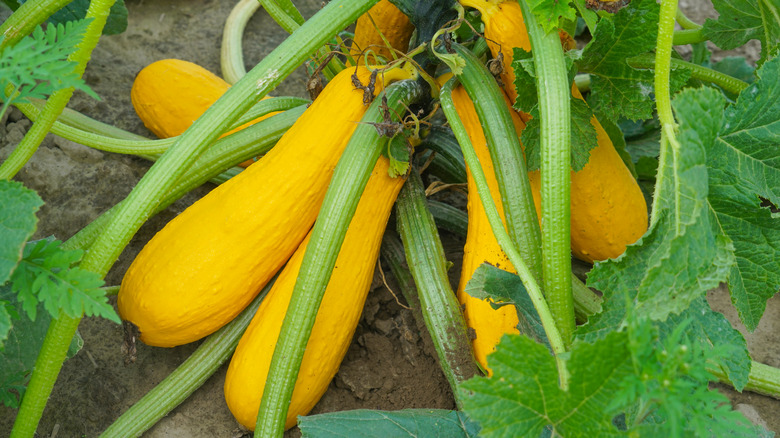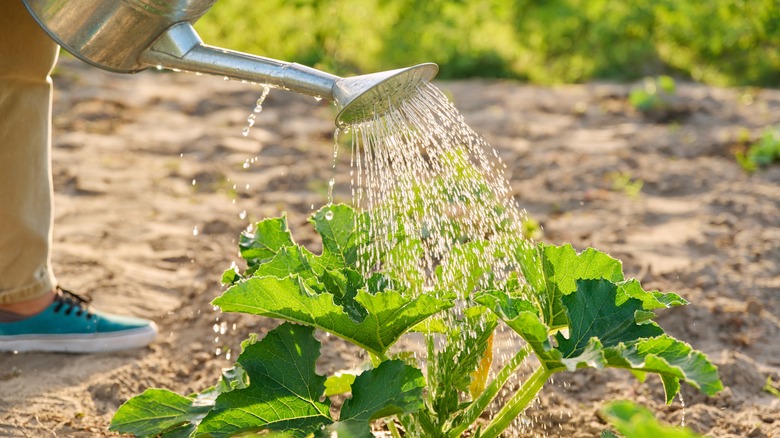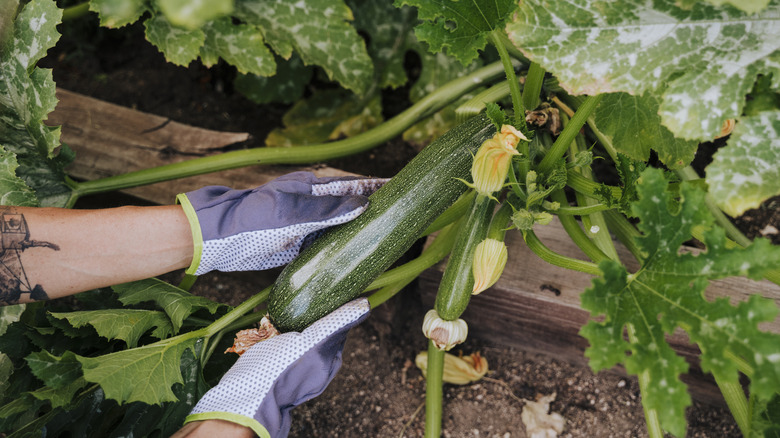How To Grow Summer Squash From Seed For A Bountiful Harvest
Would you like some fresh, homegrown summer squash ready for harvest during the summer? Such a staple plant as summer squash can be grown in even crowded gardens. To successfully grow this vegetable, which consists of zucchini and yellow squash varieties, direct sow the seeds into the ground after the last frost. While they germinate and grow, keep the plants well-watered and monitor for pests and diseases. A little over a month after planting, your summer squash should be ready for harvest.
The fruits can be harvested throughout any period of the flowering and fruiting process. Just cut them at the stem once they reach the size you prefer, and harvest frequently to prevent a decline in your plant's yield. Don't worry about harvesting too early, as the immature stage of these vegetables is tender and enjoyable to eat. However, while summer squash makes for one of the easiest and best vegetables you can grow in your garden during the summer months, there are some things you should know before you begin planting.
Details about planting and growing your squash
When to plant your summer squash depends on your USDA hardiness zone, but as a general rule of thumb, plant your first seeds after the last spring frost and when you're sure the temperature in the top layers of soil will remain around 65 to 70 degrees Fahrenheit. Depending on the zone, this could be anywhere from the end of May to the beginning of July. If you need to increase the warmth of your soil, black matting or row coverings can be used. This can also help the soil retain moisture. Though squash varieties are easy to grow, there are some specific planting details that will make for a more bountiful harvest.
Summer squash seeds should be planted in direct sunlight. Keep them shallow, about a half-inch below the soil surface. In rows that are separated by 2 to 3 feet, place squash seeds in each row about 2 inches apart. On the other hand, if you're looking for a plentiful yield, plant the seeds in mounded rows or hills. Individual squash hills can have 3 to 4 seeds planted together at the top. Each hill should be about 6 feet apart. Furthermore, squash fruiting requires and absorbs a hefty amount of water. Without waterlogging your rows or hills, keep the soil moist with frequent watering. For reference, some squash varieties need about 1 to 2 inches of water per week.
Monitoring for pests and harvesting your squash
It's also important to monitor your summer squash for pests and diseases. Summer squash could face issues with wilt disease, mildew, aphids, spotted cucumber beetles, and squash bugs, which you'll need to get out of your garden if you want your harvest to be successful. Check under the leaves for signs of aphids such as honeydew secretions. Squash bugs are less than an inch long and appear gray or brown, while spotted cucumber beetles are yellow or green with black spots. Wilting and browning of leaves could be a sign of disease. On the other hand, powdery mildew can be identified by observing white fungus on mature leaves. All of these issues should be addressed as soon as possible in order to protect your harvest.
Once fruiting begins, you're ready to harvest. A single 100-foot row can yield about 75 to 100 pounds of squash, and one person could end up utilizing about 1 to 3 hills of the fruit. The plants take about 35 to 45 days to begin fruiting. The flowers are also edible and can be eaten raw or cooked. As a general rule, harvest each squash before they're over 8 inches long or before they have hard skin. You're also going to want to harvest by cutting above the fruit, leaving about an inch of stem. This will help your squash store for longer. Your harvesting should conclude before the first fall frost.


